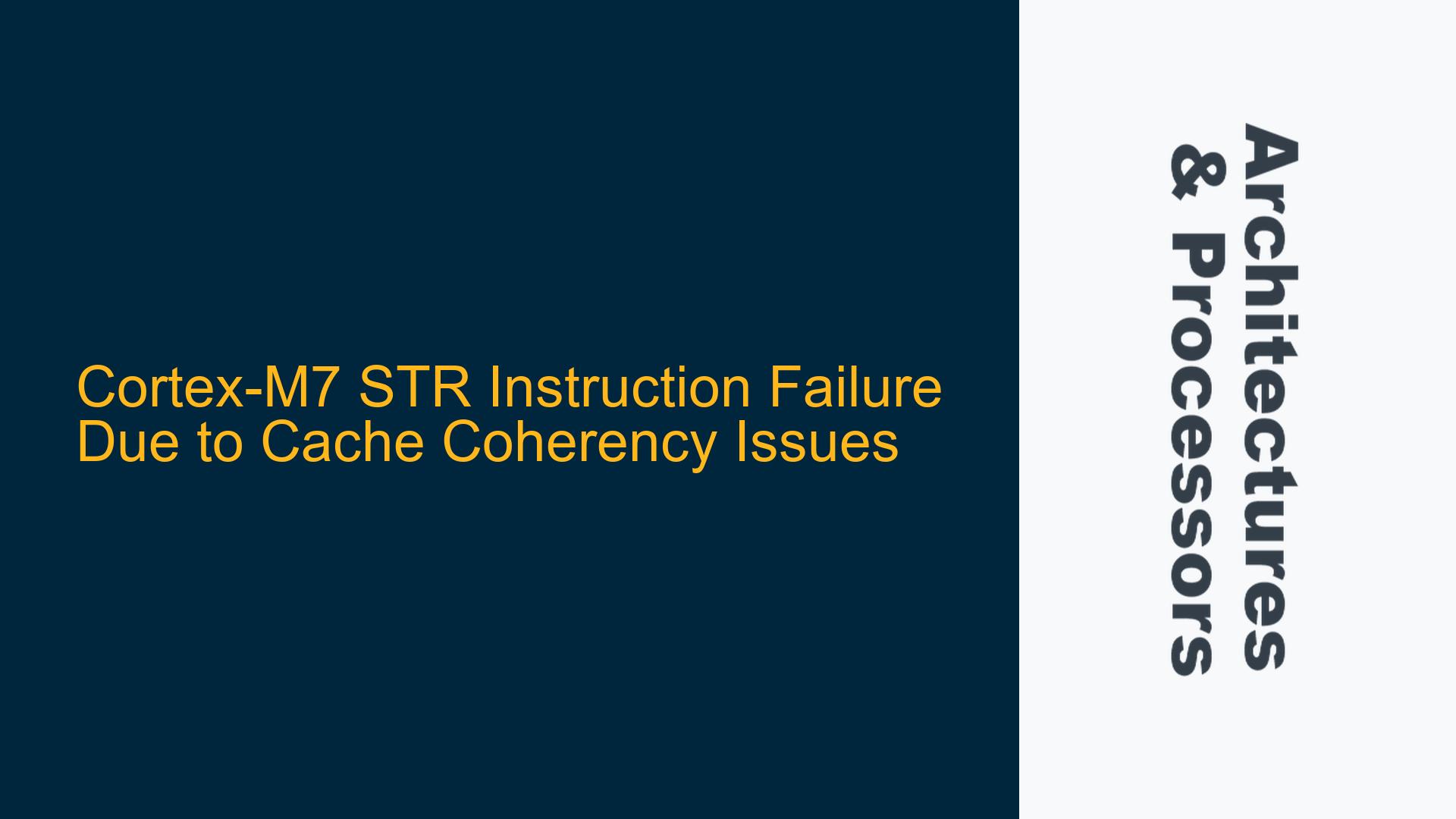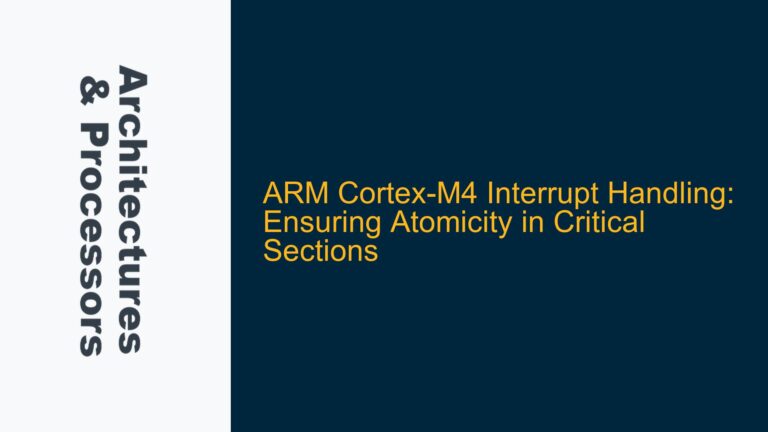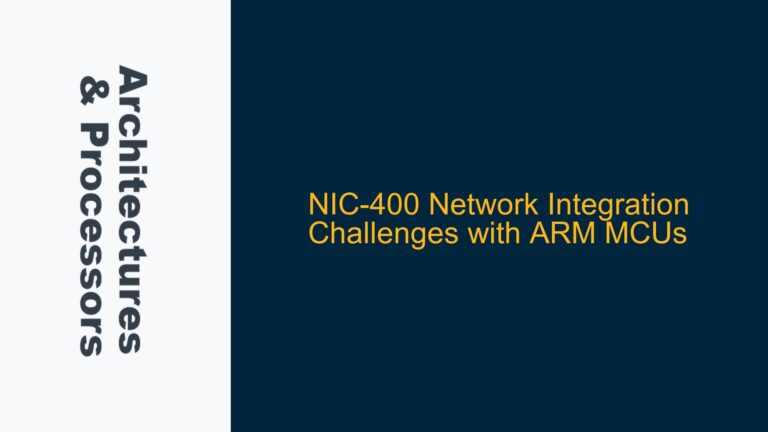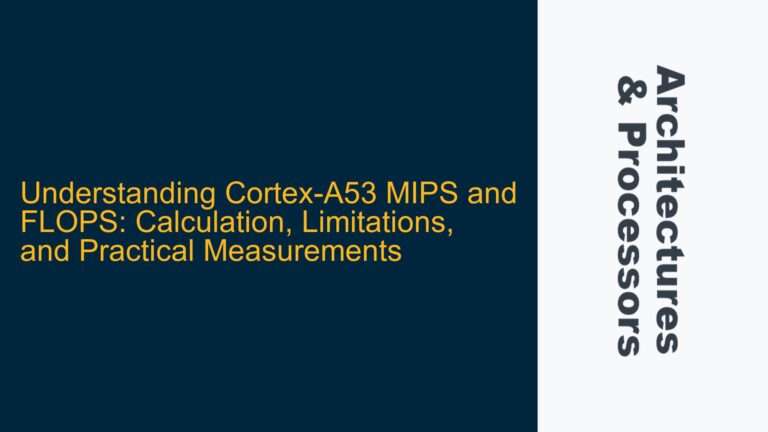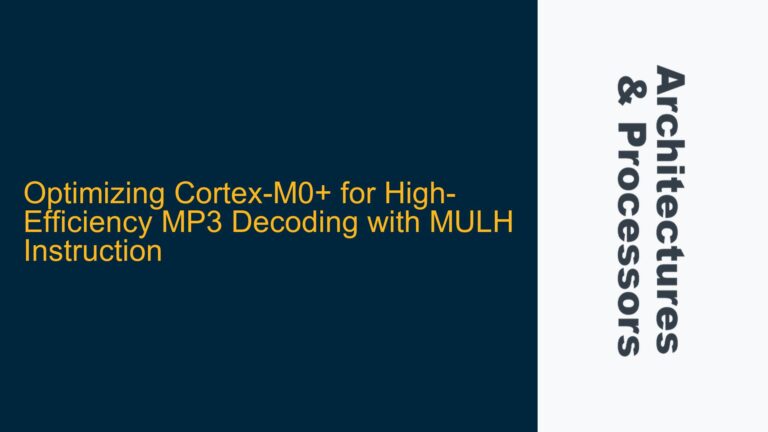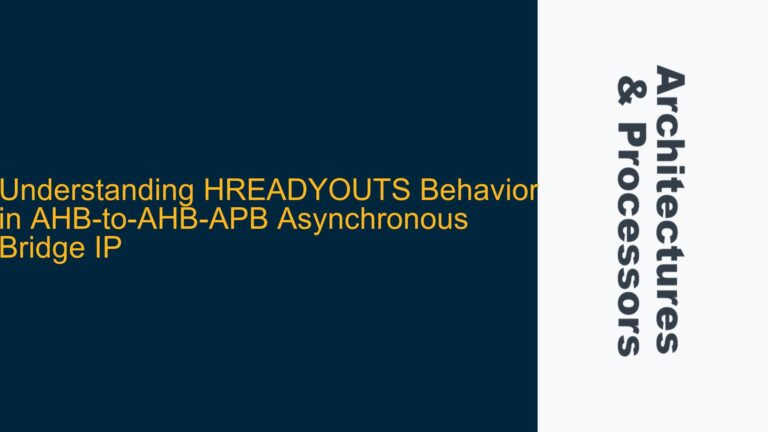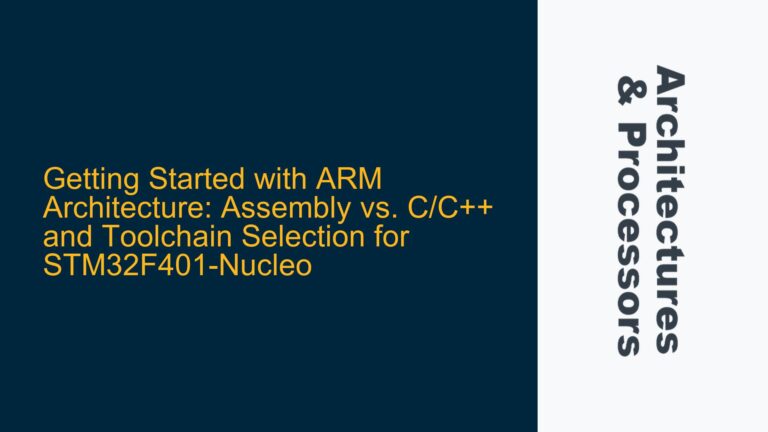Cortex-M7 Data Cache Behavior During STR Instruction Execution
The Cortex-M7 processor, found in microcontrollers like the STM32H753, is a high-performance ARM core that includes both instruction and data caches to optimize memory access speeds. However, the presence of these caches introduces complexities, particularly when dealing with memory operations such as the STR (Store Register) instruction. In this scenario, the STR instruction appears to execute correctly, but the expected data does not appear in the specified RAM location. This discrepancy is often due to the interplay between the Cortex-M7’s data cache and the memory subsystem.
The Cortex-M7 employs a write-back cache policy for its data cache. This means that when a store operation (like STR) is executed, the data is initially written to the cache rather than directly to the main memory. The data is only written back to the main memory when the cache line is evicted or explicitly flushed. This behavior is designed to improve performance by reducing the number of direct memory writes, but it can lead to confusion during debugging, as the debugger may not immediately reflect the updated data in the memory view.
When debugging, the debugger typically accesses memory directly, bypassing the cache. If the data has not been flushed from the cache to the main memory, the debugger will show stale data. This is particularly problematic in real-time systems where immediate visibility of data changes is crucial for debugging and validation.
Cache Configuration and Memory Barrier Omission
The root cause of the STR instruction failure in this context lies in the cache configuration and the absence of proper memory barriers. The Cortex-M7’s data cache is enabled by default in many implementations, including the STM32H753. When the cache is enabled, the processor optimizes memory accesses by caching data, which can lead to delays in updating the main memory.
One critical aspect often overlooked is the need for memory barriers to ensure cache coherency. Memory barriers are instructions that enforce an ordering constraint on memory operations. In the Cortex-M7, the Data Synchronization Barrier (DSB) and Data Memory Barrier (DMB) instructions are used to ensure that all memory accesses before the barrier are completed before any memory accesses after the barrier are initiated. Without these barriers, there is no guarantee that the data written by the STR instruction will be immediately visible in the main memory.
Another factor contributing to the issue is the debugger’s interaction with the cache. Debuggers typically access memory directly, bypassing the cache. If the data has not been flushed from the cache to the main memory, the debugger will not see the updated data. This can lead to the false impression that the STR instruction has failed, when in reality, the data is simply still in the cache.
Implementing Cache Management and Debugger Configuration for Reliable STR Execution
To address the STR instruction failure and ensure reliable data visibility, several steps can be taken:
-
Cache Management: Proper cache management is essential to ensure that data written by the STR instruction is immediately visible in the main memory. This can be achieved by explicitly flushing the cache after the STR instruction. The Cortex-M7 provides cache maintenance operations that can be used to flush specific cache lines or the entire cache. For example, the
SCB_CleanDCache_by_Addrfunction can be used to clean (flush) specific cache lines to the main memory. -
Memory Barriers: Inserting memory barriers after the STR instruction ensures that the data is written to the main memory before any subsequent operations. The DSB instruction can be used to enforce this ordering. For example, placing a DSB instruction immediately after the STR instruction ensures that the data is written to the main memory before the processor continues with the next instruction.
-
Debugger Configuration: Some debuggers, such as Lauterbach, provide options to flush the cache at breakpoints, ensuring that the memory view reflects the most recent data. If your debugger supports this feature, enabling it can provide more accurate debugging information. For other debuggers, it is essential to manually flush the cache or disable it during debugging to ensure data visibility.
-
Cache Disabling: In some cases, disabling the data cache entirely may be a viable solution, especially during the debugging phase. This ensures that all memory operations are performed directly on the main memory, eliminating any discrepancies caused by cache behavior. However, this approach should be used with caution, as it can significantly impact performance.
-
Volatile Keyword: Ensuring that the memory location being written to is declared as
volatilecan also help. Thevolatilekeyword informs the compiler that the value of the variable may change at any time, preventing certain optimizations that could interfere with the expected behavior.
By implementing these steps, the STR instruction failure can be resolved, and the expected data will be reliably written to the specified RAM location. Proper cache management, the use of memory barriers, and appropriate debugger configuration are key to ensuring consistent and predictable behavior in Cortex-M7-based systems.
Detailed Cache Management and Debugging Techniques
Cache Maintenance Operations
The Cortex-M7 provides several cache maintenance operations that can be used to manage the data cache effectively. These operations include cleaning, invalidating, and cleaning/invalidating cache lines. Cleaning a cache line writes the data back to the main memory, while invalidating a cache line removes the data from the cache without writing it back to the main memory.
For example, to clean a specific cache line, the SCB_CleanDCache_by_Addr function can be used. This function takes the starting address and the size of the memory region to be cleaned as parameters. Here is an example of how to use this function:
#include "stm32h7xx_hal.h"
void clean_cache_line(uint32_t *address, uint32_t size) {
SCB_CleanDCache_by_Addr(address, size);
}
This function ensures that the data written by the STR instruction is flushed to the main memory, making it visible to the debugger.
Memory Barrier Instructions
Memory barrier instructions are crucial for ensuring the correct ordering of memory operations. The Cortex-M7 provides several memory barrier instructions, including DSB, DMB, and ISB (Instruction Synchronization Barrier). The DSB instruction ensures that all memory accesses before the barrier are completed before any memory accesses after the barrier are initiated.
Here is an example of how to use the DSB instruction after a STR instruction:
STR R0, [R1] ; Store the value in R0 to the memory location pointed to by R1
DSB ; Data Synchronization Barrier
This ensures that the data is written to the main memory before the processor continues with the next instruction.
Debugger Configuration
Configuring the debugger to flush the cache at breakpoints can provide more accurate debugging information. For example, in Lauterbach Trace32, the cache can be flushed at breakpoints using the SYStem.Option.CACHE command. This ensures that the memory view reflects the most recent data.
For other debuggers, it is essential to check the documentation for similar features. If the debugger does not support cache flushing at breakpoints, manually flushing the cache or disabling it during debugging may be necessary.
Volatile Keyword
Using the volatile keyword for the memory location being written to can prevent the compiler from optimizing away the memory access. This ensures that the memory access is performed as expected, even if the compiler thinks it is unnecessary.
Here is an example of how to use the volatile keyword:
volatile uint32_t *address = (volatile uint32_t *)0x2400AD7C;
*address = 0x12345678; // STR instruction equivalent
This ensures that the compiler does not optimize away the memory access, and the data is written to the specified memory location.
Conclusion
The Cortex-M7’s data cache introduces complexities that can lead to unexpected behavior, particularly during debugging. By understanding the cache behavior, implementing proper cache management, using memory barriers, and configuring the debugger appropriately, the STR instruction failure can be resolved. These techniques ensure that data is reliably written to the specified RAM location and is visible during debugging, providing a more predictable and consistent system behavior.
